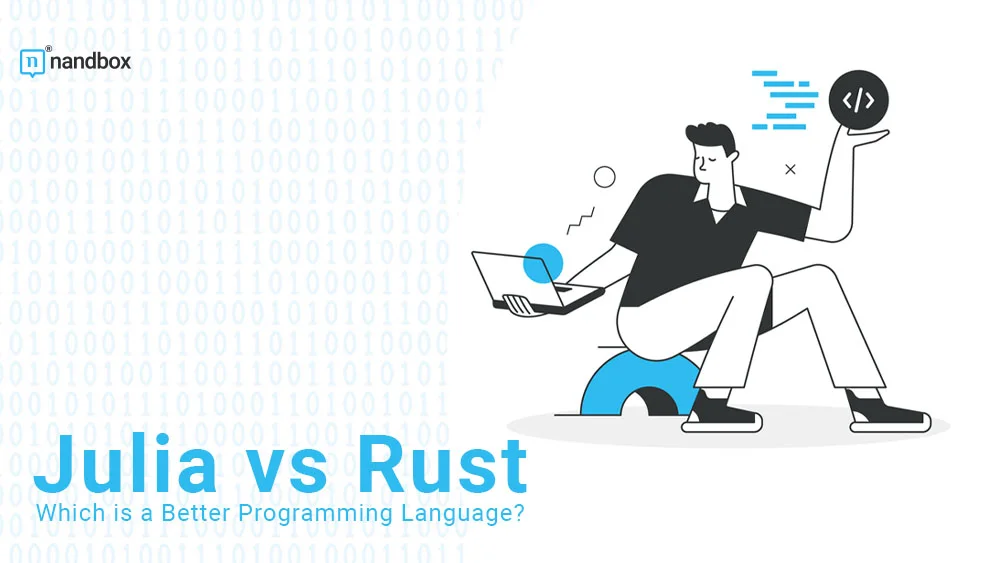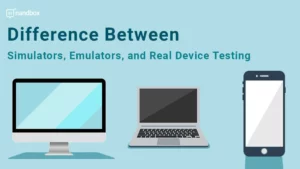Julia vs Rust: A Comprehensive Comparison of Two Powerful Programming Languages
When it comes to programming languages, there are many options to choose from. Two popular choices are Julia and Rust, both of which offer unique features and benefits. In this article, we’ll compare the two languages to help you decide which one is right for your needs.
These two programming languages have some features that might seem a bit similar but also differ greatly from one another. They both have their own pros and cons that we will weigh in this article. Moreover, they both have special uses, which we will be highlighting in this article. Here’s a more in-depth comparison of these languages:
An Introduction to Julia

Julia is a high-level, high-performance dynamic programming language. Developers use Julia in machine learning, data analysis, and numerical and scientific computing. A team of researchers and developers originally presented it in 2012. With the goal of developing a language that combines the usability of Python and R. That is with the power of compiled languages like C and Fortran.
One of Julia’s important advantages is its capacity for just-in-time (JIT) code compilation at runtime. This enables quick execution times and effective memory usage. Additionally, Julia makes use of multiple dispatching, which enables flexible and effective code that can manage intricate data structures and function overloading.
A huge number of libraries and tools in Julia, which has a syntax akin to MATLAB, Python, and R, make it an excellent choice for the mentioned usages of this language. Some well-liked Julia libraries are:
- DataFrames.jl is a package for working with tabular data.
- Plots.jl: It is a plotting library that supports a variety of visualization types
- Flux.jl: is a deep learning library that gives neural network construction and training a high-level interface. Data scientists, academics, and developers have grown more and more fond of Julia in recent years. That is because they require high-performance computing skills for intricate scientific and technical applications. Julia, simply put, is a strong tool for a variety of applications due to its simplicity of use, quick development cycle, and capacity to scale from simple scripts to large-scale production systems.
A Detailed Introduction to Rust: A Systems Programming Language
Mozilla created the systems programming language called Rust. It offers memory and thread safety without compromising performance and is intended for safe and concurrent programming. Operating systems, game engines, and web browsers are just a few examples of low-level system components that are frequently created in Rust.
Rust’s ownership and borrowing mechanism, which helps avoid common programming problems like Null Dereferences and buffer overflows, is one of its major characteristics. Fine-grained control over memory utilization is possible with this architecture, which also assures that only one section of the code may access a given block of memory at once, avoiding data races and other concurrency problems.
Strongly typed languages like Rust offer zero-cost abstractions, which means that abstractions like functions and data structures don’t have any additional runtime costs. Rust code may now run just as quickly as C or C++ code while still offering a high level of security and ease.
The robust macro system in Rust also enables code creation and metaprogramming. In addition to performing other complex tasks, developers use macros to develop domain-specific languages and generate boilerplate code.
Range of Fields and Applications That Use Rust as a Programming Language
Developers use Rust in a wide range of fields and applications and has a developing ecosystem of libraries and tools. Several well-liked Rust libraries are as follows:
- Serde is a package that allows you to serialize and deserialize Rust data structures into and out of formats like JSON, YAML, and others.
- Tokio is a Rust library for creating event-driven, asynchronous applications.
- Rocket is a Rust web framework that offers a high level of comfort and security. Rust is an all-around strong and adaptable language that is perfect for low-level system programming tasks that demand excellent performance and safety. It is becoming more and more popular among programmers who have to produce quick, dependable, and secure code for a variety of applications.
Pros and Cons of Julia
These languages, as great and complicated enough to satisfy certain minds, are considered flawed for some. That is why we did a little pros and cons for each of them for better clarity:
Here some pros of Julia vs Rust:
- High-performance computing capabilities, with just-in-time (JIT) compilation for fast execution speeds.
- Easy to use for numerical analysis, data science, and machine learning tasks, with a syntax similar to Python, R, and MATLAB.
- Flexible and efficient code with multiple dispatch and a type system that supports dynamic and static typing.
- Large collection of libraries and tools for scientific computing, data analysis, and machine learning.
Cons of Julia vs Rust:
- Limited support for web development and other application domains outside of scientific computing and data analysis.
- Smaller community compared to more established languages like Python and Java.
- Limited backward compatibility between major versions, which can make upgrading to new versions challenging.
Pros and Cons of Rust
Pros of Rust:
- Safe and concurrent programming with memory safety and thread safety features.
- High performance with zero-cost abstractions and close-to-the-metal control.
- Powerful macro system for code generation and metaprogramming.
- Large and growing ecosystem of libraries and tools for system programming tasks.
Cons of Rust:
- Steep learning curve due to its unique ownership and borrowing system.
- Limited support for garbage collection, which can make memory management more challenging.
- Limited support for high-level abstractions, which can make some programming tasks more verbose.
Julia vs Rust: What Similarities Do They Have in Common?
Since LLVM is used by both Julia and Rust, the performance of compilation is probably comparable. But unlike Rust, which doesn’t yet have a stable REPL, Julia also comes with an interactive REPL for more convenient experimentation.
Community and Support
When it comes to community and support, both Julia and Rust have active and growing communities. Julia has a large and supportive community that focuses on scientific computing and data analysis. The Julia community is known for being welcoming and helpful to newcomers, with many resources available for learning and getting started with the language. Rust also has a strong and growing community, with a focus on systems programming and web development. The Rust community is known for being passionate about the language and its potential, with many resources available for learning and contributing to the language and its ecosystem. Ultimately, the community and support for each language will depend on your specific needs and interests.
Julia vs Rust: Which Has a Better Future When It Comes to Programming?
It’s challenging to determine which programming language will have a more promising future because both Julia and Rust have their own advantages and are utilized in various contexts. Both languages are being utilized in many different industries and have expanding development communities, so it’s probable that their popularity will only increase over time.
As we mentioned above, Julia has a quick development cycle, is simple to use, and is ideally suited for scientific computing, data analysis, and machine learning activities. Researchers and data scientists who need high-performance computing skills frequently use it because of its performance advantages and versatility.
Low-level system programming jobs requiring high performance and safety ideally suites Rust. It is a popular option for creating high-performance and dependable systems due to its distinctive ownership and borrowing mechanism and memory safety features.
Both programming languages are open-source, have thriving developer communities, and constantly produce new libraries, tools, and frameworks. The final decision on which language to choose is dependent upon the particular requirements and objectives of the project, and each language has its own pros and disadvantages.
Julia vs Rust: Which Programming Language Should You Choose?
Since we’re discussing something that is totally up for negotiation, the answer will be very simple. You have to choose what suits your project more. Python for example is way easier in the process of its learning than Julia or Rust. You should first make up your mind on which programming language will be more beneficial for you and utilize it efficiently. Here is a quick summary of both languages:
Julia was designed for this purpose, where errors and crashes aren’t always the end of the world and performance isn’t of the utmost importance, but It’s not a risky statement to say that its speed counts when big data analysis is done well. Use Julia if you want to do engaging scientific computing and build programs that emphasize calculations or data analysis. Basically, use Julia anywhere Python or MATLAB could be appropriate.
If you want to write code for tech infrastructures, games, web servers, or really anywhere where performance and memory utilization must be reliable, use Rust. Developers also use Rust to create programs with strict memory safety and security requirements.
That is why we’re saying that it all depends on your preferences and your business, project, or any other goals that will make you use any of these programming languages.
Final Thoughts on Julia vs Rust
In the end, as we mentioned before, the choice of language relies on what the project needs and what it wants to achieve. Both Julia and Rust have busy and growing groups of developers who are always making new libraries, tools, and frameworks. Even though they are different, each language has its own pros and cons, and both are likely to continue to change and become more famous in the future.
We know how complicated all the tech talk could be. Sometimes you might feel like your mind might go numb from it all. That is why in nandbox we take care of all the technical hassles and solve for all back-end related tech issues. That is to facilitate for you the usage of our seamless product. Our no-code native app builder will help you create an app from scratch. Furthermore, it helps you create apps that are native. Which means that Google Play Store and Apple App Store support these applications.
With nandbox, you can actually drag-and-drop features into your app development window, and voila! You will have something that will help you empower your own business and yourself.






